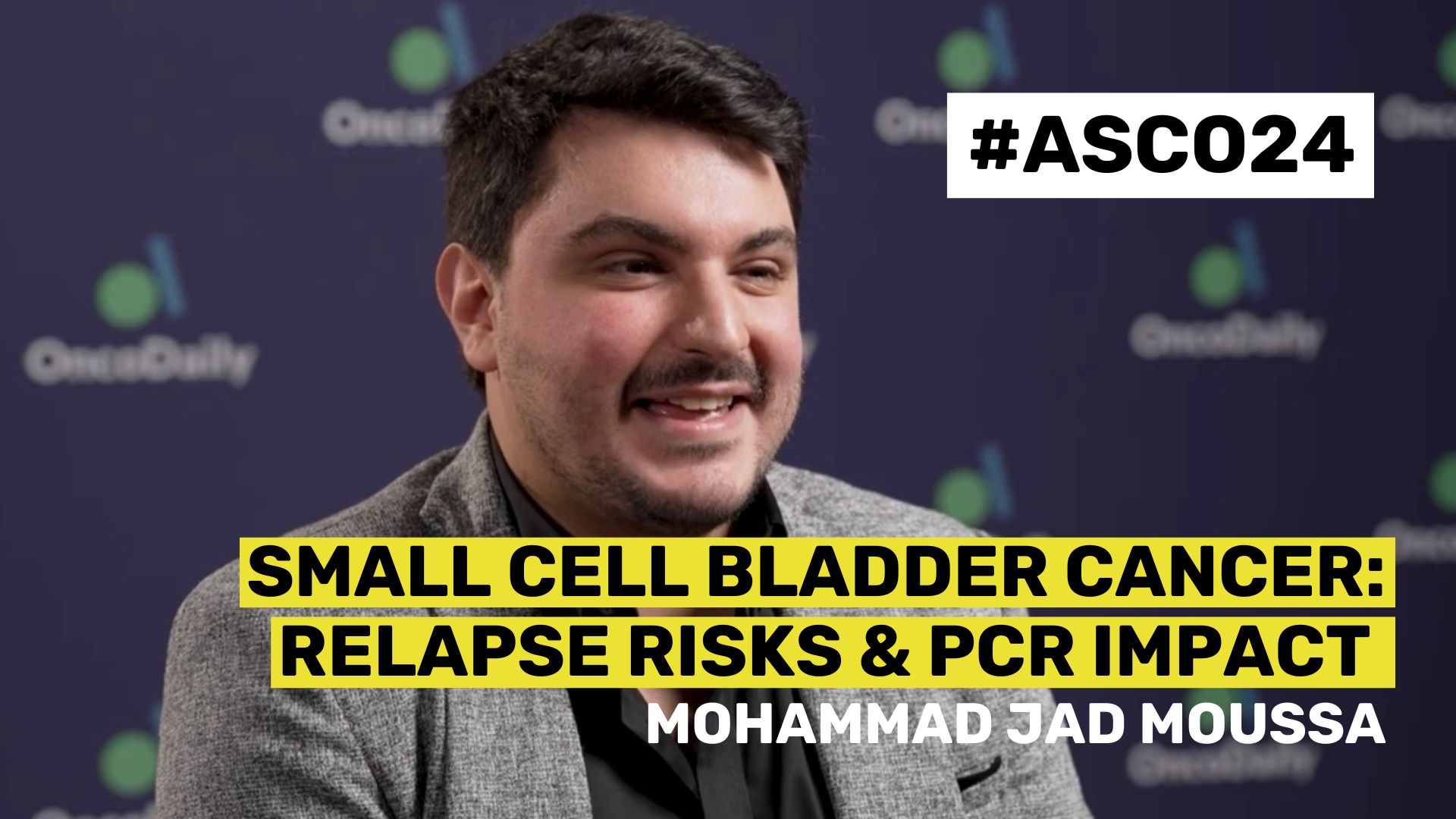The American Society of Clinical Oncology (ASCO) Annual Meeting is one of the largest and most prestigious conferences in the field of oncology. This year, the meeting took place from May 31 to June 4 in Chicago, Illinois. The event gathers oncologists, researchers, and healthcare professionals from around the world to discuss the latest advancements in cancer research, treatment, and patient care. Keynote sessions, research presentations, and panel discussions are typically part of the agenda, providing attendees with valuable insights into emerging trends and innovations in oncology.
This year, OncoDaily was at ASCO 2024 for the first time covering the meeting on-site. We had the pleasure of interviewing researchers who summarized the highlights of their work.
In this video, Dr. Mohammad Jad Moussa from MD Anderson Cancer Center, shared insights on ‘Prognostic factors of relapse in surgically resected small cell neuroendocrine carcinomas of the urothelial tract (SCNEC-URO).‘
Hello OncoDaily, nice to meet you. My name is Mohammad Jad Moussa. I’m a postdoctoral fellow in the Department of Genitourinary Medical Oncology at the University of Texas MD Anderson Cancer Center, mentored by Drs. Matthew Campbell and Omar Alhalabi.
I’m very happy to meet the team of OncoDaily today to talk about our abstract at ASCO 2024. So despite the recent huge advances in the management of metastatic oophedal cancer with antibody drug conjugates like Enfortumab, barodin, and sacituzumab govitecan, targeted therapies, or other immunotherapy combinations, there are still a lot of unmet therapeutic needs in the rare variant histologies in bladder cancer as well as other cancers in the urinary tract.
Our research interest as a group has been focused on small cell bladder cancer, a disease with very high metastatic potential and dismal prognosis. Only around 10 to 40 percent of patients survive beyond five years, and even the median overall survival doesn’t usually surpass two years at best.
Recently, we have published our series in favor of a standard of care of treatment of localized small cell bladder cancer or even small cell neuroendocrine carcinomas of the urinary tract, where we proved that neoadjuvant chemotherapy that targets the small cell component like etopozyte plus cisplatin, EP, or IAEP, alternating regimens of etopozyte plus cisplatin and I-phosphamide plus atriomycin, are able to give some benefit in pathological downstaging and survival.
However, although we know that the standard of care is neoadjuvant chemotherapy followed by surgery in localized small cell bladder cancer, we still don’t understand the of the disease and its behavior after surgery. So the post-surgical outcomes are very crucial for us to understand what is the driver of the metastatic relapse. At ASCO 2024, we submitted an abstract related to the different outcomes of histology at resection and their impact on the risk of relapse after surgery.
Why did we get interested into that? This actually comes from very curious observation. Actually, most small cell bladder cancer cases coexist with urethelial carcinoma at diagnosis, but a lot of genitourinary oncologists and pathologists don’t really understand what is the exact contribution or significance.
And with the recent development of new antibody drug conjugates and therapies that target urethelial carcinoma, it is important for us to know, should we target the small cell component or should we target the urethelial component? So in this abstract, we extract our data from an historical institutional database of 224 patients with small cell neuroendocrine carcinomas of the urinary tract treated at MD Anderson between 1985 and 2021.
We found out that different histologies at resection are correlated with different risks of relapse. For example, if we find minority small cell at resection, which means a small cell component that are less than 50% of the surgical specimen, the risk of relapse is just very low at around 53%, but it starts to increase progressively with the increasing contribution of the small cell component to the specimen. So even though neoadjuvant chemotherapy is able to exert some pressure and kill the small cell component, there are still a subset of patients that actually have a remaining small cell component over there.
But with the increasing contribution from minority small cell to predominant small cell to an exclusive small cell component, the risk of relapse is increasing respectively from 53% to 69% and even to 85%. Curiously, we also found that patients who are able to achieve PCR after neoadjuvant chemotherapy are the patients who have the best risk of non-relapse or disease-free evolution, which is around a risk of 16.5%.
Why are these findings important? One, they help our genitourinary oncologists and our urologic oncologists stratify the risk of relapse for their patients after surgery, and this can help them guide their discussions and their real-life time clinic, daily life clinic as well. Two, this is also important because this can also guide some studies of adjuvant therapy.
While we know that this remaining small cell component is actually correlated to an increased risk of relapse despite neoadjuvant chemotherapy, we probably might benefit from an adjuvant approach to try to eliminate that risk on that driver of metastatic relapse. And with the great advent of adjuvant therapy in urothelial carcinoma, like in the Ambassador trial where we are seeing some disease-free benefit with pembrolizumab or with nivolumab in other studies, we might think of adjuvant therapies as well in small cell neuroendocrine carcinoma of the urinary tract.
More videos and content from ASCO 2024 on OncoDaily.
